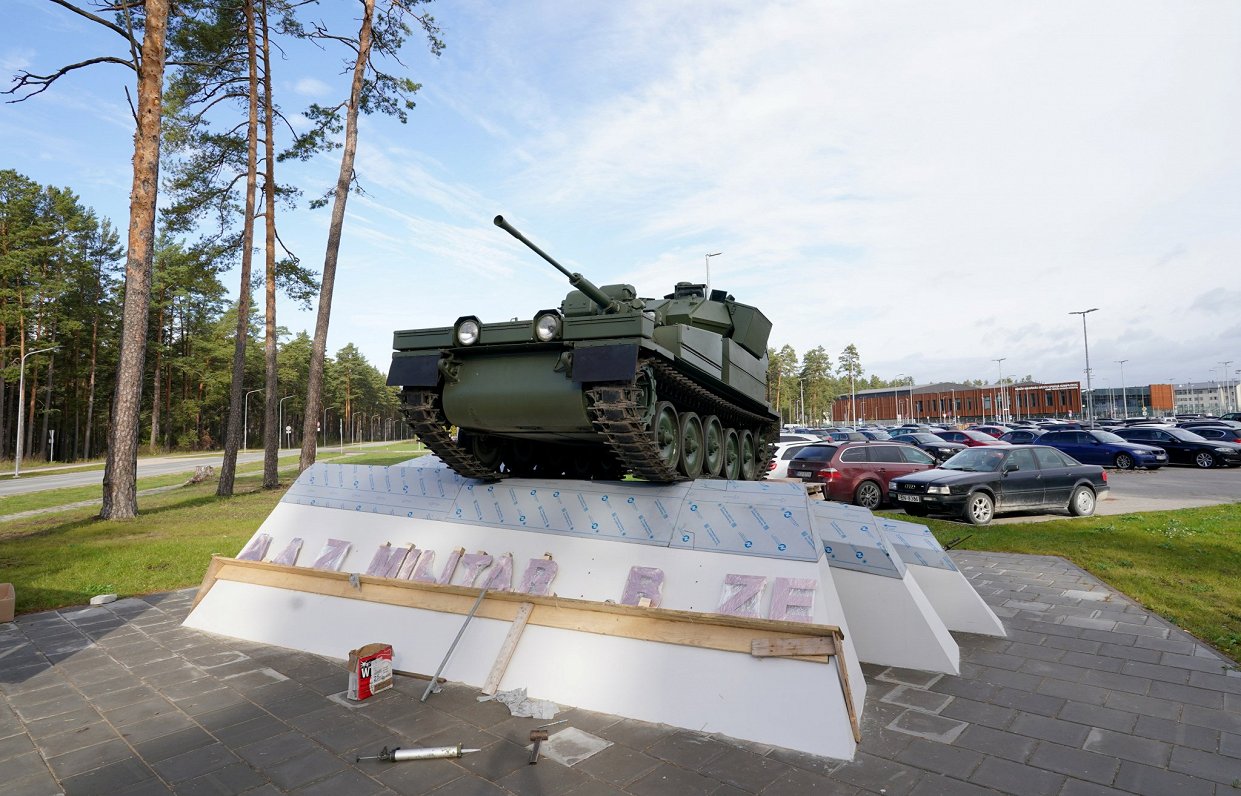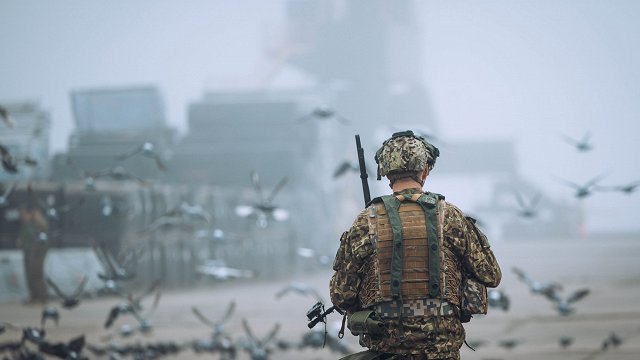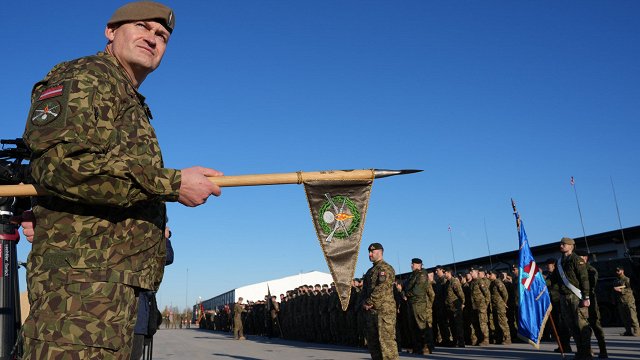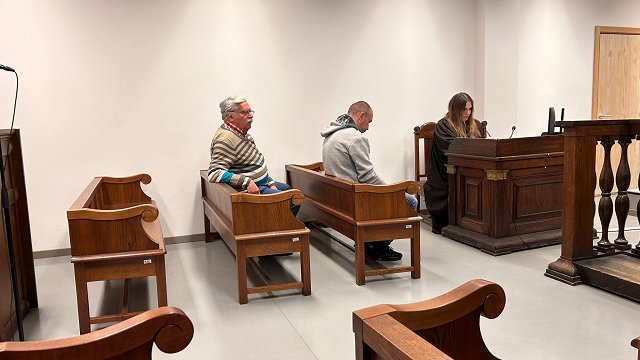The so-called sculpture consists of a surplus-to-requirements British-built CVRT fighting vehicle (bought ten years ago as part of a 48 million euro deal) on top of a concrete plinth. Even the biggest fans of tanks on plinths (yes, we know it's not technically a tank) would be hard-pressed to make a case for it as an artwork, let alone one worth 183,000 euros.
A release from the Ministry of Defense November 1 said Sprūds had been handed a report on how such a huge sum was spent on the tank-on-a-plinth which gave the following details.
The idea for a "military sculpture composition" near the Ādaži military base originated in 2017, when Raimonds Bergmanis was Minister of Defense. Originally it was planned to allocate a fairly modest 30 square meters "for the symbolic placement of armored vehicles".
The implementation of the project was launched at the end of 2020 – by which time Bergmanis had been succeeded by Artis Pabriks – and it was directed by the Joint Staff of the National Armed Forces in concert with the Defense Ministry.
The initial cost of the project was estimated at a mere 20,000 euros, but after submitting the technical requirements and visual material the cost of the project suddenly increased almost four-fold to 93,650 euros.
Then, during the implementation of the project, "the costs increased to more than 183,000 euros, expanding the sculptural composition with the improvement of the surrounding environment and the construction of communications" said the Defense Ministry release.
Thus the tank-on-a-plinth ended up costing more than nine times the original estimate.
The area occupied by the armored ensemble was significantly increased from the initial 30 to 147 square meters, as well as the planned greening of an area of 258 square meters.
"Paved areas were created, sidewalks were arranged for pedestrians, lighting was expanded, as well as security and video surveillance systems installed," said the release.
The inspection report concluded that the preparation and installation of the actual "military sculptural composition" accounted for only 15% of the total project costs. Engineering design and construction made up 40% of the costs, while improvement of the territory ate up another 45%.
"The increase was caused not only by the expansion of the design during the project, but also by the increase in prices, which was affected by the increase in construction costs and the complications of deliveries after Russia's full-scale invasion of Ukraine in 2022," said the Ministry.
"In the inspection of the service, apparently no formal violations of internal and external regulatory acts were found. The conclusions of the inspection show that, although the initial intentions were good – to create a better representation and image of the Ādaži training area in the eyes of soldiers, society and allies – over time the idea of the project 'grew up' with additional wishes, including by integrating it into the wider construction of the improvement of the territory in the project. Together with the objective increase in construction prices, this, in turn, led to an increase as a result of inflation," said Sprūds.
However, despite the establishing of a timeline for the increasing costs, the ministry's release was thin on exactly how such massively increased costs were signed off, apparently without anyone considering if they were justified in order to put an old tank on a plinth by a gate. As well as the aforementioned ministers and Sprūds himself, Ināra Mūrniece also served as Defense Minister during the period of the project's completion.
Sprūds admitted: "Even though no formal violations were found in the service inspection, apparently, all risks were not properly evaluated initially, including a critical assessment of the proportionality of the intentions and cost to the National Armed Forces and the Ministry of Defense by the responsible persons. Although the basic conclusions have been drawn, certain circumstances are still being clarified. Financial investments in security must be responsible, transparent and must strengthen Latvia's defense capabilities."
Sprūds said he had ordered a thorough analysis of the entire construction project program as well as information on other construction projects in which significant price increases (30% and more) are expected.
"Some projects have already been identified that meet these risk factors and whose implementation progress is currently being intensively evaluated," the ministry said without specifying which projects these were.
Additional control mechanisms will now be introduced in construction programs in order to identify objects in which significant price increases above 30% are expected. The project monitoring threshold will also be lowered so that the control mechanisms also apply to projects whose costs are below 1 million euros.
"It is necessary to move towards the digitization of construction project systems to ensure more transparent supervision, strengthen internal control and allow for more prompt tracking of project risk elements, such as rising expenses," said the ministry.
NATO standards and best practices used by other allied countries should also be adopted in future, the ministry added.
























